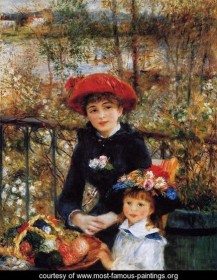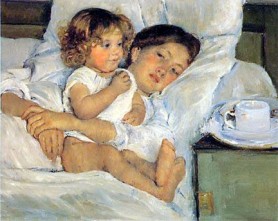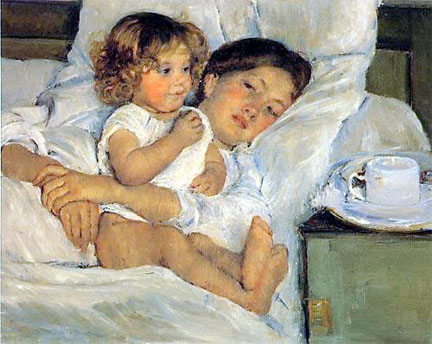
This discussion by Akima McPherson places the importance of the Guyana Women Artists’ Associa-tion in the context of the historical development of women artists globally. Akima McPherson is a Lecturer in Fine Arts in the Department of Language and Cultural Studies, University of Guyana.
By Akima McPherson
Part 1
Every year the Guyana Women Artists’ Association (GWAA) holds an annual exhibition. The Association came into being in 1987 when, according to Vanda Radzik some years ago, Nesha Haniff a visiting scholar, posed what proved to be a watershed question to Ms Agnes Jones, then Administrator of the Burrowes School of Art. She asked Ms Jones, where the Guyanese women artists were; on her visits to government buildings, the art adorning the walls had been signed by men.
Ms Jones called together the women artists she knew and the rest, as they say, is history. An association was formed, and in 1988 the inaugural exhibition was held with 300 works spanning decades including a piece from Helen Agard from the late 1800s – The Palms Lima Essequibo. The book 60 years of Women Artists in Guyana 1928 – 1988: A Historical Perspective was also produced.

The formation of the GWAA was a consequence of a global discussion that had begun over two decades earlier and which was still vibrantly alive. In a 1971 essay, soon to be leader and pioneer of feminist art theory, Linda Nochlin, posed the question, “Why have there been no great women artists?” Her question concerned the discussion around the absence of art by women in the established art historical narratives and what she called “the domination of white male subjectivity.” She also sought to challenge the automatic response to the question: “There are no great women artists because women are incapable of greatness.”
However, her perspective was not to elevate inadequately recognised women artists to positions of visibility, or attempt to discuss their unrecognised independence from the male master artists they were associated with. For Nochlin, the feminist scholars who do this reinforce the negative implications of the question itself.
“Such attempts, whether undertaken from a feminist point of view, […] are certainly worth the effort, both in adding to our knowledge of women’s achievement and of art history generally. But they do nothing to question the assumptions lying behind the question, ‘Why have there been no great women artists?‘ On the contrary, by attempting to answer it, they tacitly reinforce its negative implications.”
She goes on to address the suggestion of some of her contemporary feminists who advocated “that there is a different kind of ‘greatness’ for women’s art than for men’s [art],” thereby insisting upon the existence of a feminine style.
But what is the feminine style? The so-called feminine style would have a character distinct and determined by women’s “situation and experience.” In art it is evident by delicate handling of colour and medium, having an inward looking/introverted character and concerning itself with subject matter such as floral still-lifes, children and domestic scenes. But as Nochlin points out, such feminine subject matter and handling of colour, etc, were present in the work of many celebrated male artists. Therefore, in the vein of Nochlin, was Renoir creating feminine work when he painted On the Terrace and many others? No. His work and similar work by other male artists have not been so classified. Therefore, why is his contemporary, Mary Cassatt’s work deemed feminine and not his?

Nochlin reminds us how absurd the discussions to set women’s art apart from men’s art have been. In dismissing ‘femininity’ as a standard, Nochlin defines art as a very self-conscious and consistent, learned and practised skill concerned with medium (the material used to make the art, ie, oil paint) and art elements (lines, colour, etc) to communicate. She refutes the prevailing notion that art is a visual expression of the inner being: “The problem lies not so much with some feminists‘ concept of what femininity is, but rather with their misconception – shared with the public at large – of what art is: with the naive idea that art is the direct, personal expression of individual emotional experience, a translation of personal life into visual terms.”
This misconception has important implications. Because if art is that which emerges as a translation of emotional experience, it is the effectiveness of the translation and not the technicalities of doing so that deems the work great. But as one may note, what art is when assessed as great differs from the popular conception of it; art is great because of both content and technical proficiency.
She goes on to say, “The fact of the matter is that there have been no supremely great women artists […]. There are no women equivalents for Michelangelo or Rembrandt, Delacroix or Cezanne, Picasso or Matisse, or even, in very recent times, for de Kooning or Warhol, any more than there are black American equivalents for the same.”
But why is this? And this goes to the heart of her discussion. Nochlin points out that educational institutions historically favoured white, middle-class males, and that this is largely responsible for the lack of equivalents from other demographics. It is a miracle, she notes, that individuals outside of this privileged group have made superior accomplishments. For instance, women were barred from attending the art academies for centuries. So the fact that men were able to excel and surpass women substantially was inevitable; unable to train how could women have had the opportunity to have their latent genius be developed fully?
Nochlin explores the notion of genius and the artist and the assigning of the status of ‘great.’ She notes that the exhibition of precocious talent, which amounted to nothing, has not been a concern of historians. Instead, they have allowed themselves to be fascinated with those who unwittingly exhibited talents that caught the eye of the masters who chose to train them. As a consequence, great artists have been assumed to have innate artistic talents that inevitably with right training, put them above all others. But if girls could not receive formal training or could only be trained in some techniques by even their artist fathers, how could their ‘genius’ be developed?
An example of this dilemma is reflected in the story of Artemisia Gentileschi, famed Italian Baroque painter. She received her early training from her father Orazio Gentilischi, himself an accomplished artist. However, when he found he could teach her no more and attempted to enrol her in the Academy, she was denied entry because in the early 1600s women were not allowed to enrol. Fortunately, she was able to work around this restriction and gain the necessary training to be the artist of stature she grew to be.
Nochlin suggests a more useful line of inquiry would be to ask, “Why have there been no great artists from the aristocracy?“ Doing so would lead one to the realization that the social pressures of the aristocracy and the social pressures of womanhood have impinged on the time needed for the dedicated study of art and thus curtailed the development of the great skill needed for one to be deemed a great artist.
Thus, it is not a so-called lack of genius associated with female genetics that should account for the absence of women amongst great artists, but the realities of social pressures and obligations.
She says, “the total situation of art making, both in terms of the development of the art maker and in the nature and quality of the work of art itself, occur in a social situation […]“ It is these situations that one must take into consideration in addressing the initial question instead of assuming that greatness is somehow gender related.
To be continued

